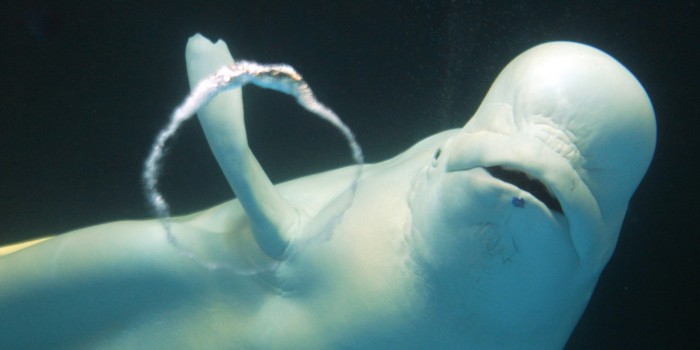Millions of years before we humans came along, the earth’s oceans were a vast, unbroken web of whale song. The complex courting arias of humpbacks, the distinct clicking dialects of migrating sperm-whale clans, the congalike poundings of Pacific grays, the multi-thousand-mile moans and blips of massive blue and fin whales conversing across oceans at octaves well below our range of hearing, the nearly nonstop Arctic chatter of belugas: All of them are being drowned out now by our clamor.
And yet a single beluga managed to make his voice go global again, and in the only medium left him: the worldwide web. The extraordinary history of Noc (pronounced no-see) resurrects a captive who somehow has found a way to speak to us, both literally and figuratively, of the true nature of his kind.
Since the early 1960s the United States had been deploying marine mammals, beginning with dolphins, for tasks including mine detection and recovery of test torpedoes. By the mid-1970s, the locus of the naval cold war had shifted to the Arctic, where the latest Soviet submarines were secreting themselves under the ice cap, an environment off-limits to animals including dolphins and sea lions used in the Navy Marine Mammal Program (NMMP). Experiments commenced on weaponry that could function in such extreme conditions. The Navy needed marine mammals with built-in sonar, capable of locating and retrieving sunken experimental torpedoes in the frigid waters and low visibility of the Arctic.
In August 1977, with Canadian government consent, Sam Ridgway, a Texas-born veterinarian and a co-founder of NMMP, dispatched a team to the northern coast of Manitoba. There, the Navy would procure the first belugas for a new Arctic initiative, known as “Cold Ops.” Belugas typically travel in pods of approximately 25 whales, led by a dominant male but bound by close ties between mothers and their calves. Newborns nurse for about two years and, living within a multitiered matriarchal society very similar to that of elephants, are also raised by an extended group of females.
